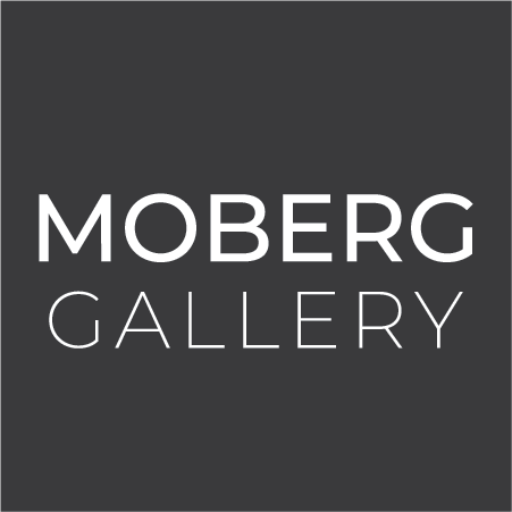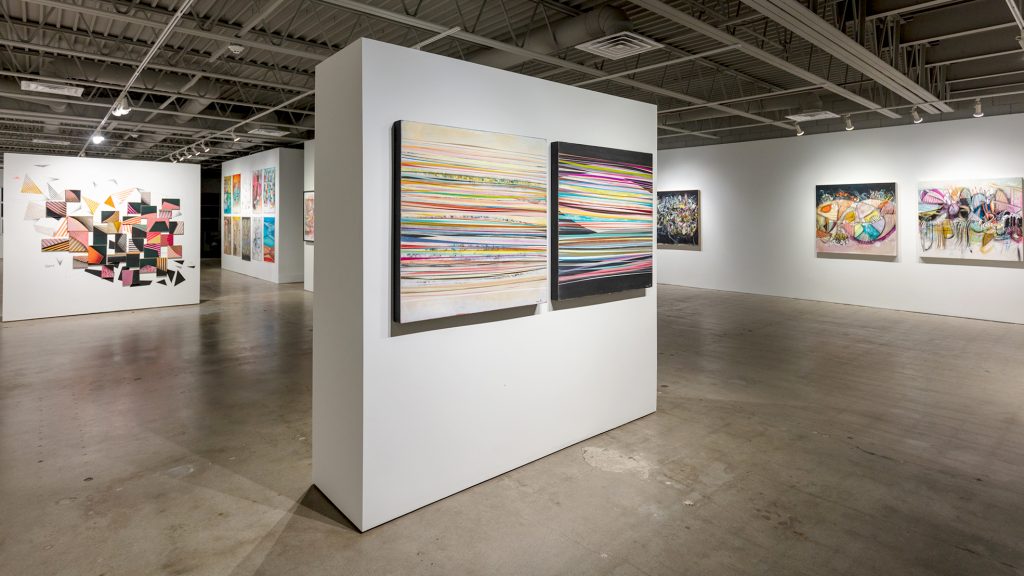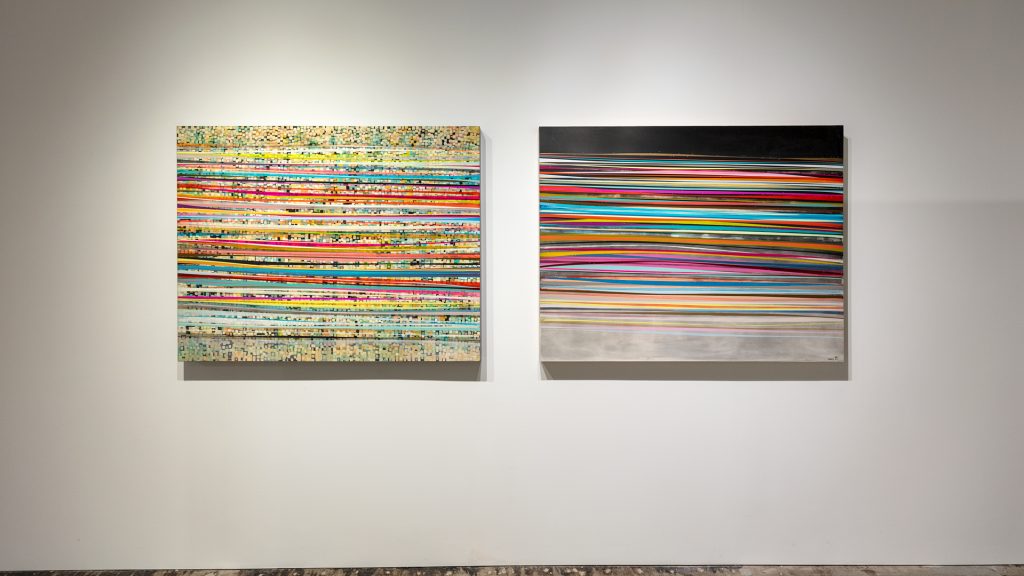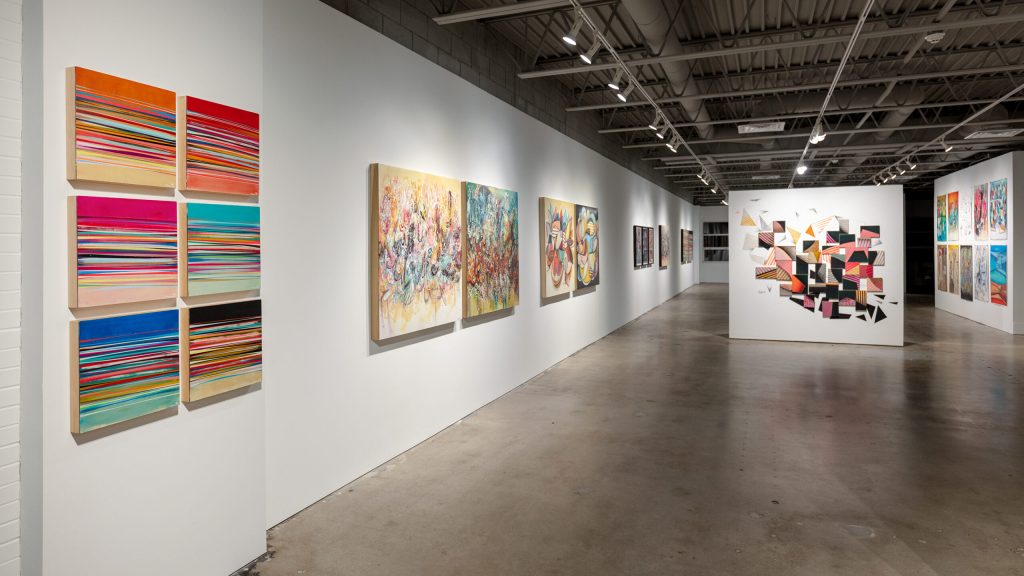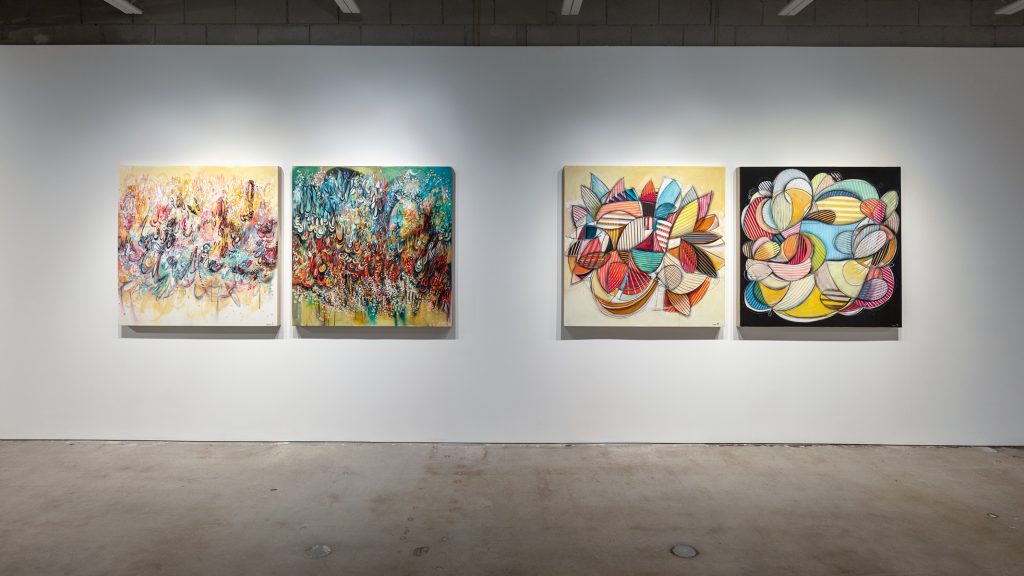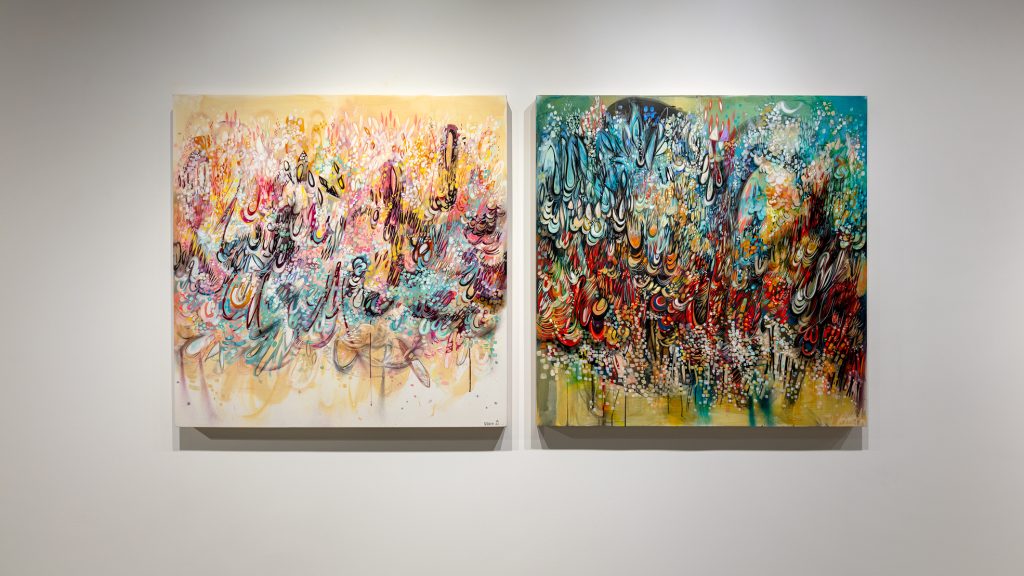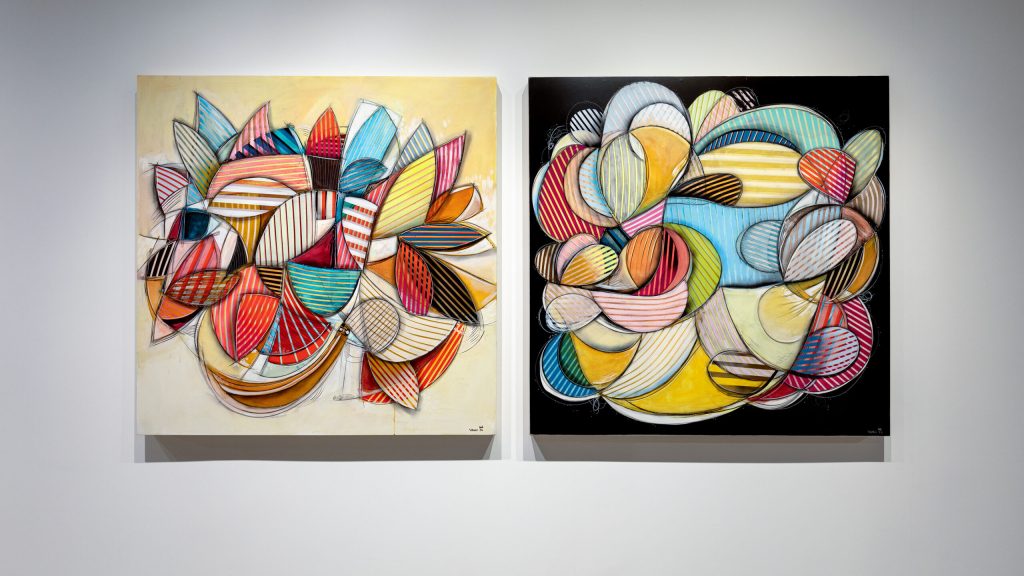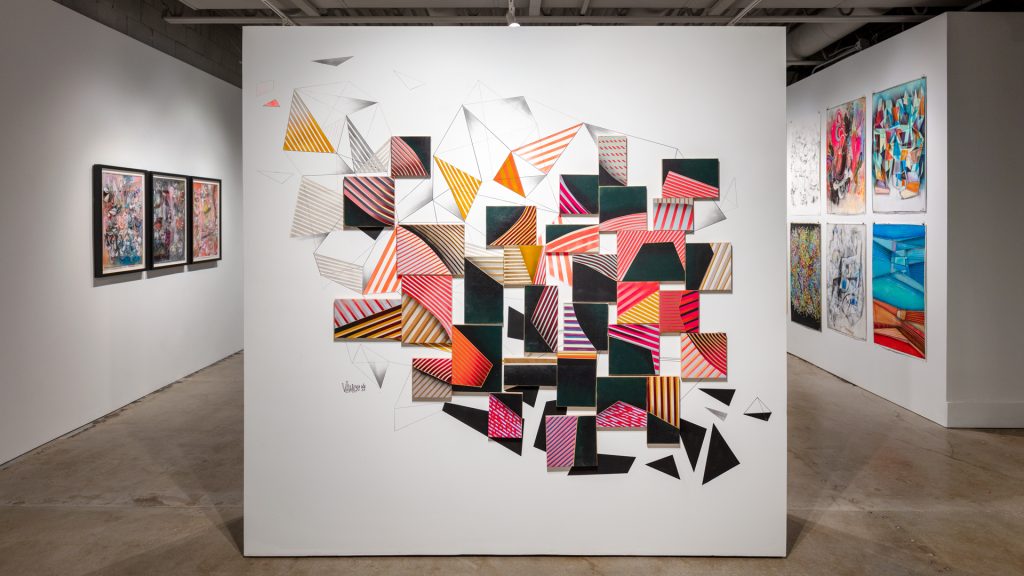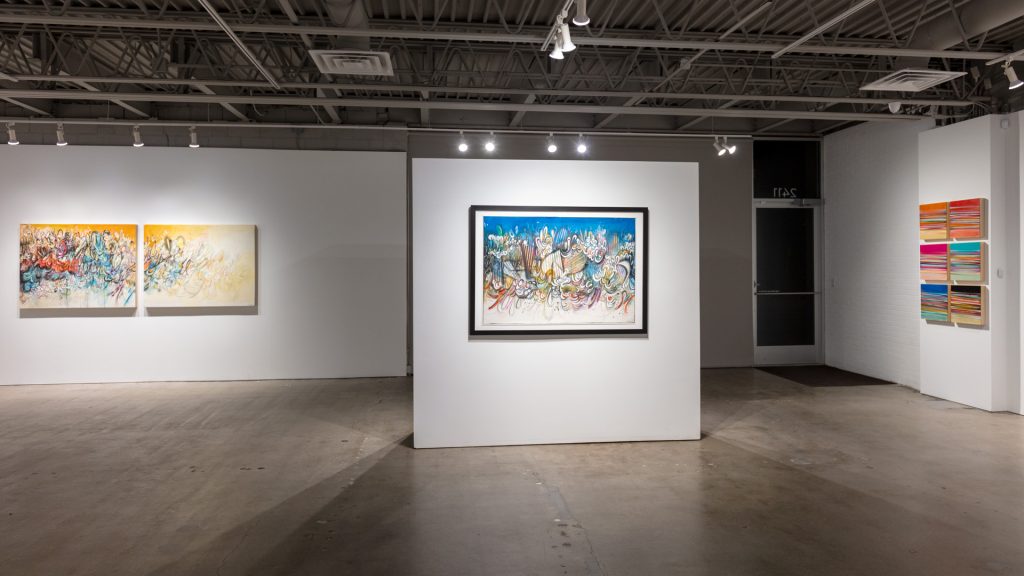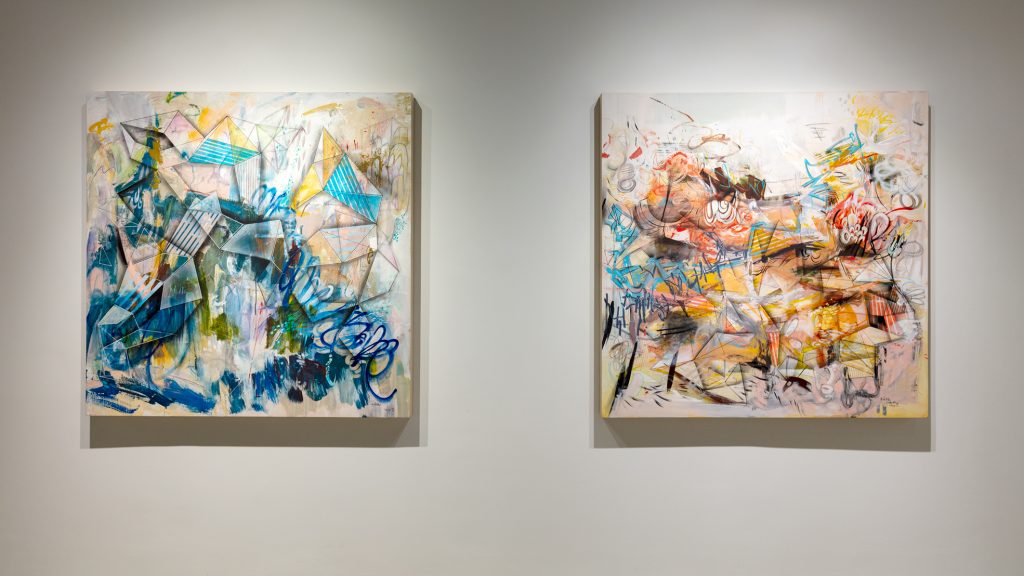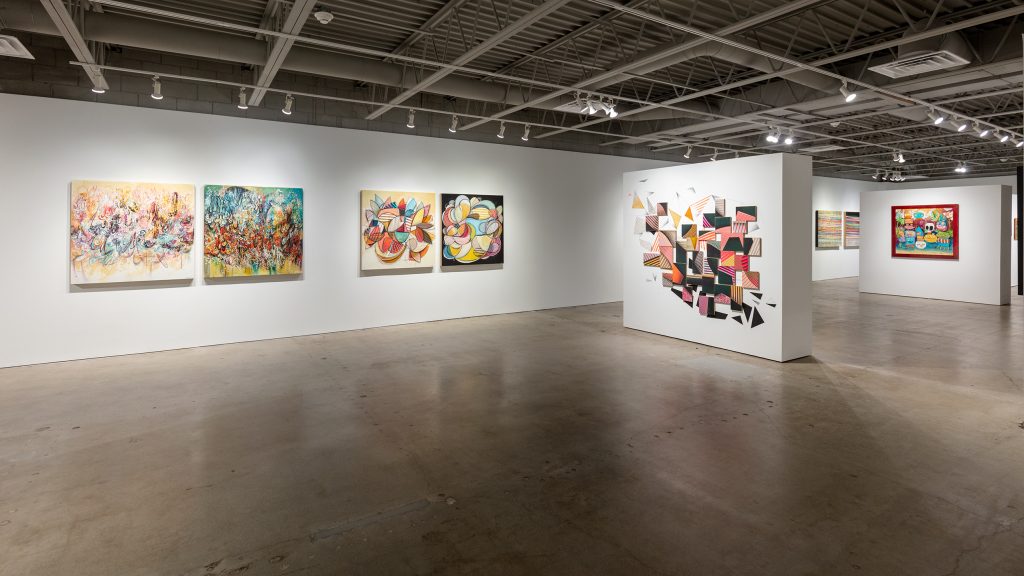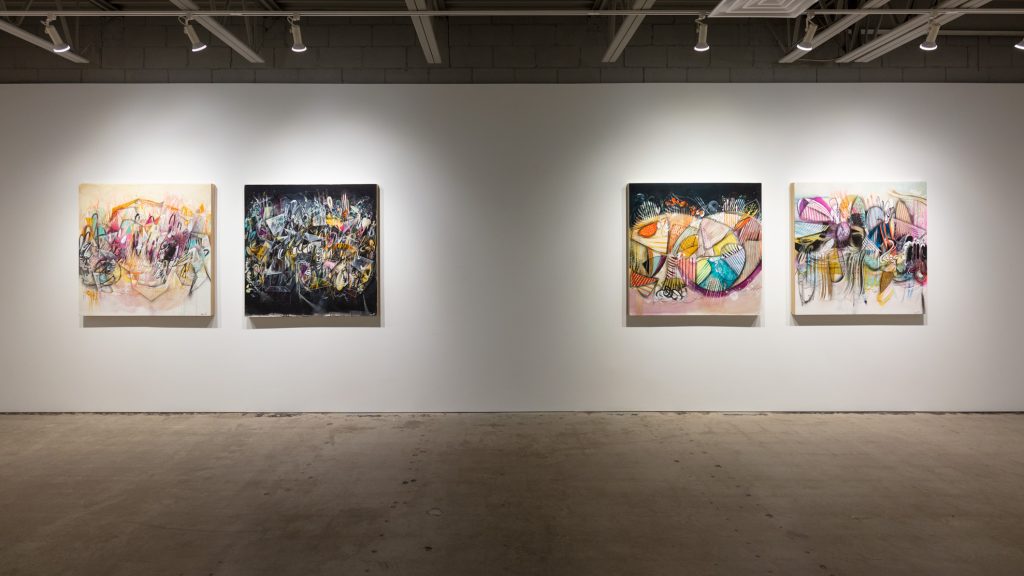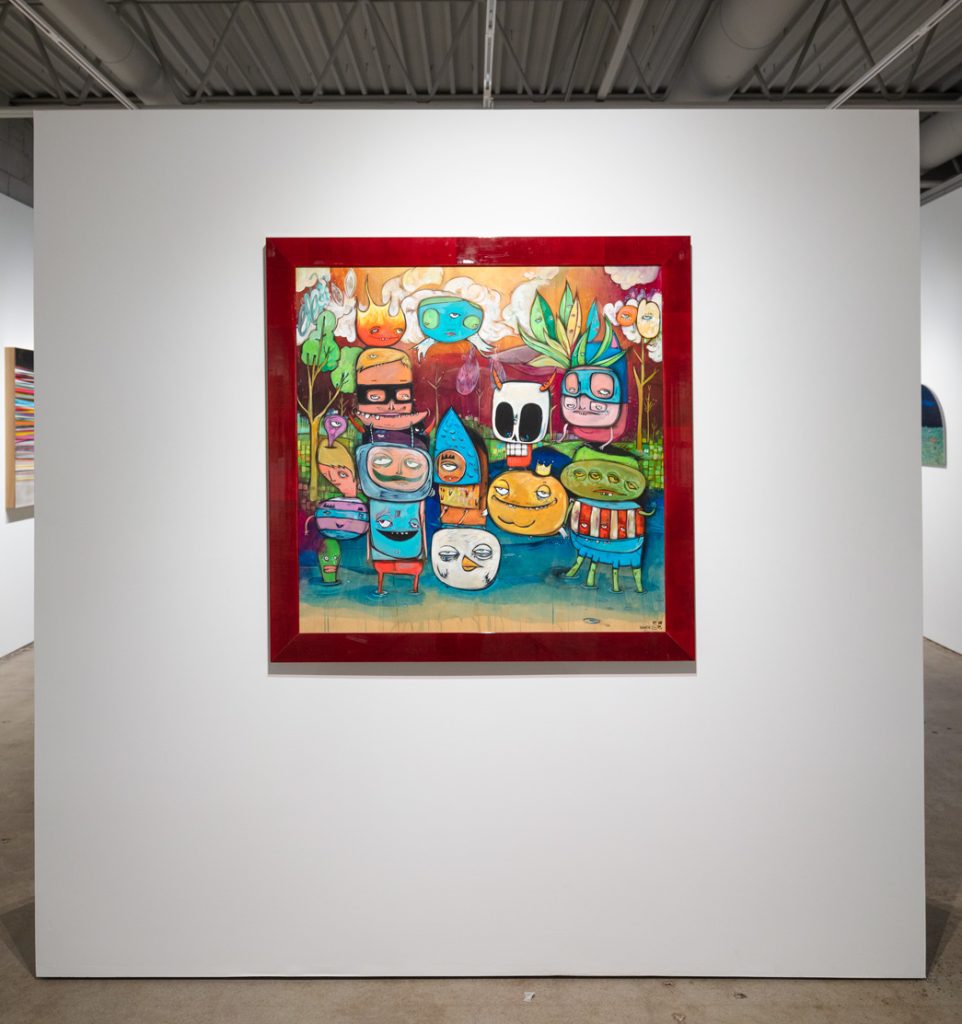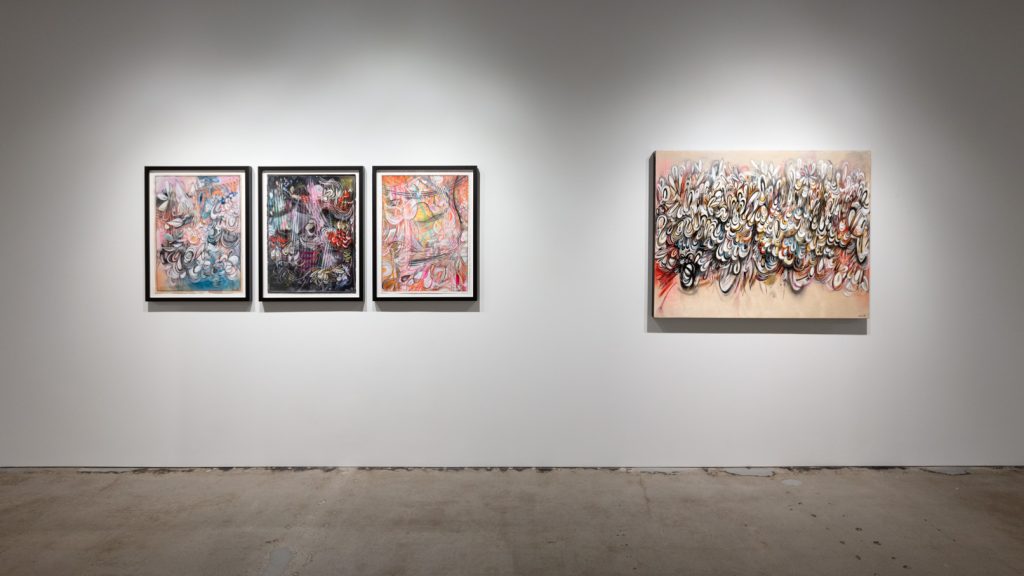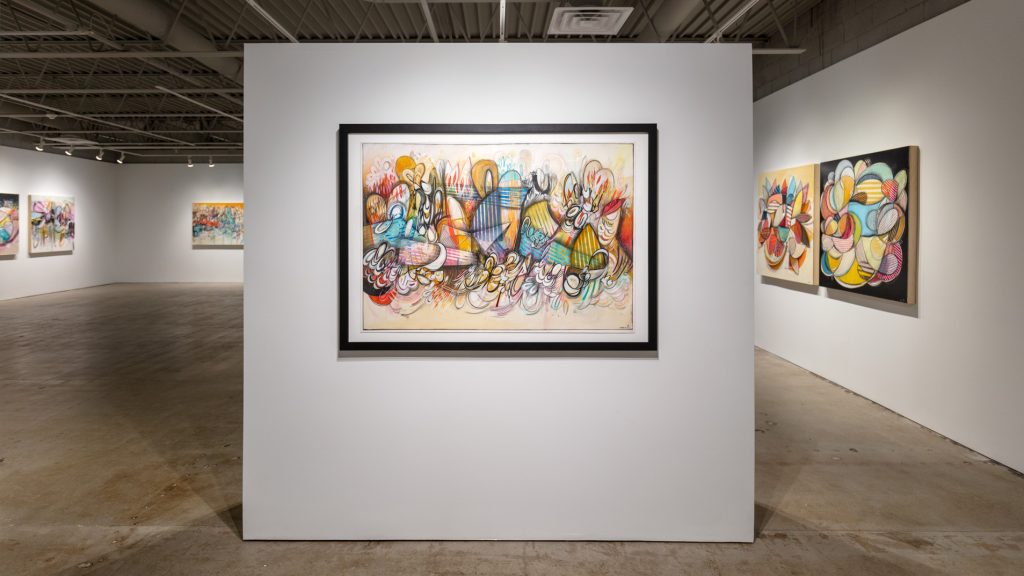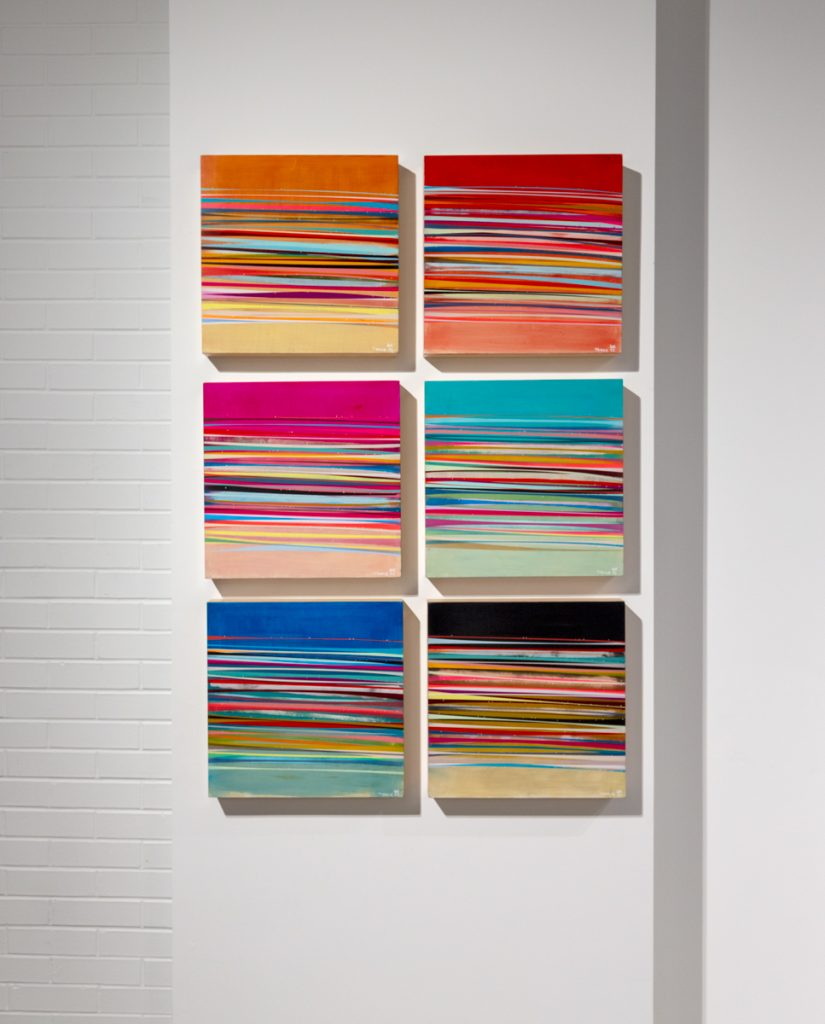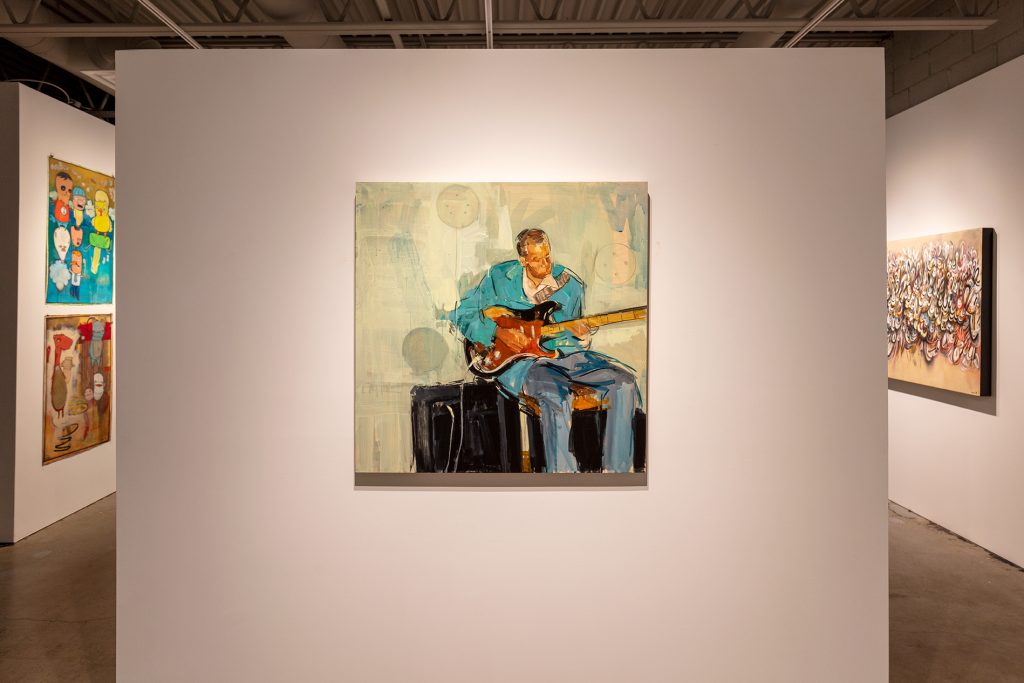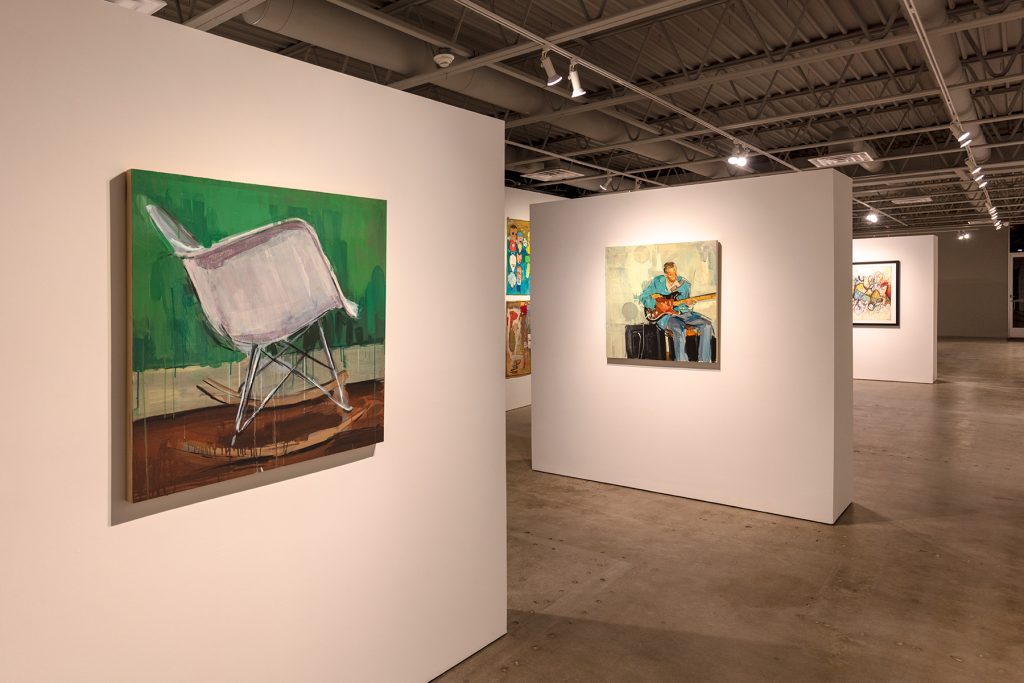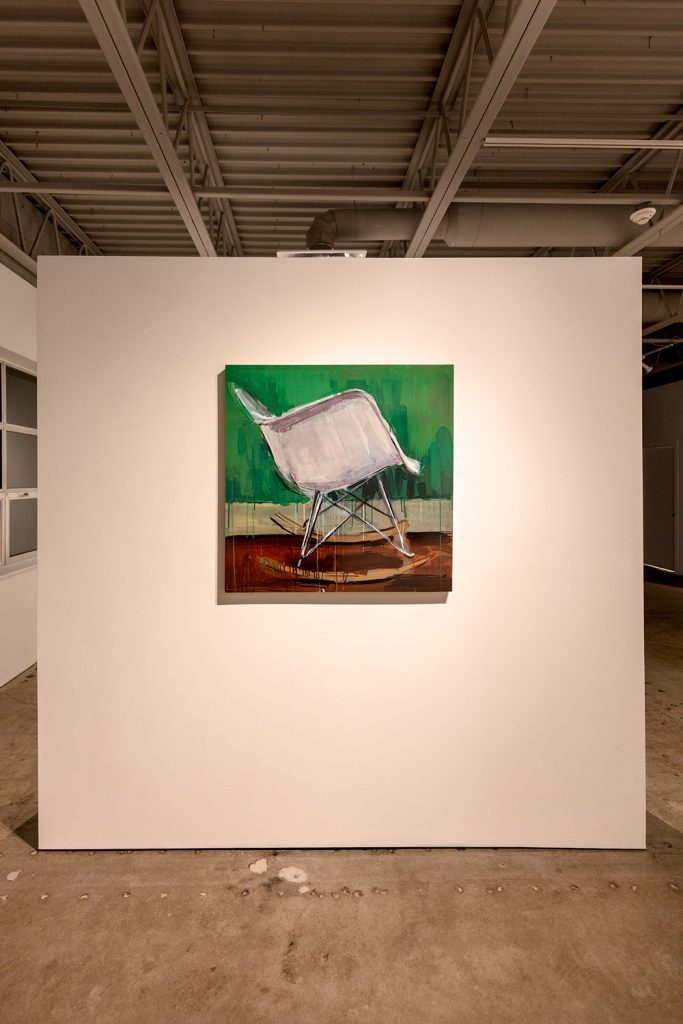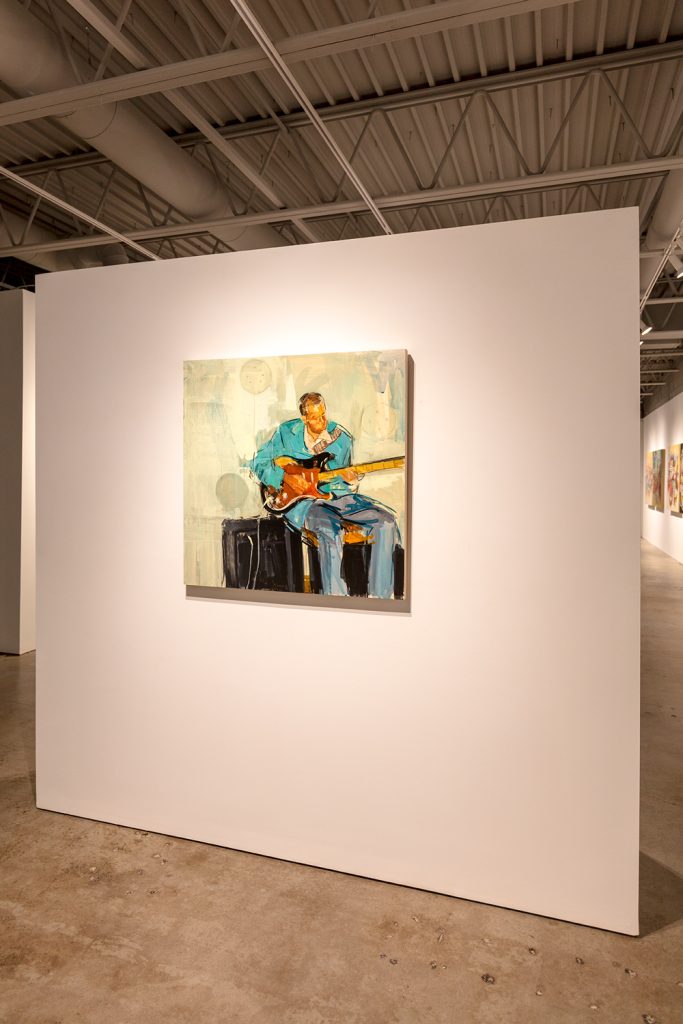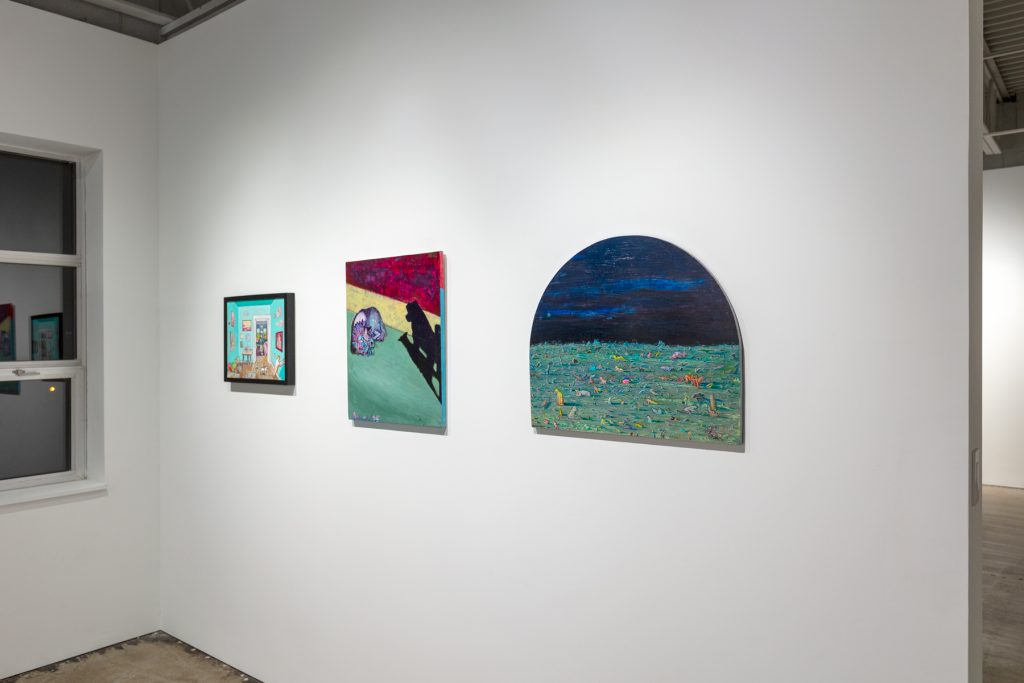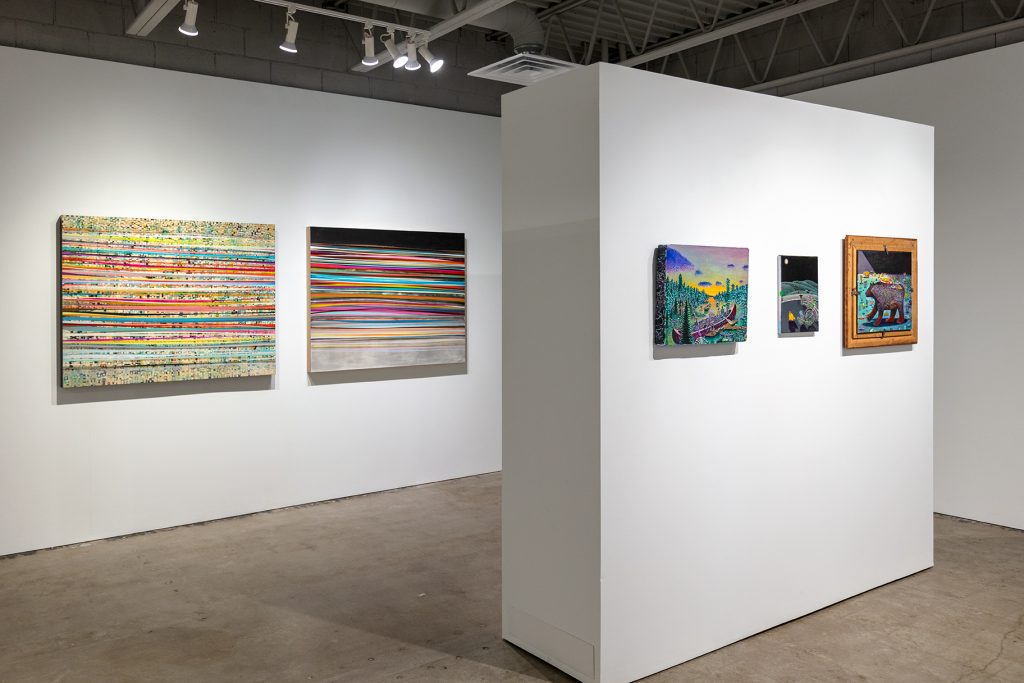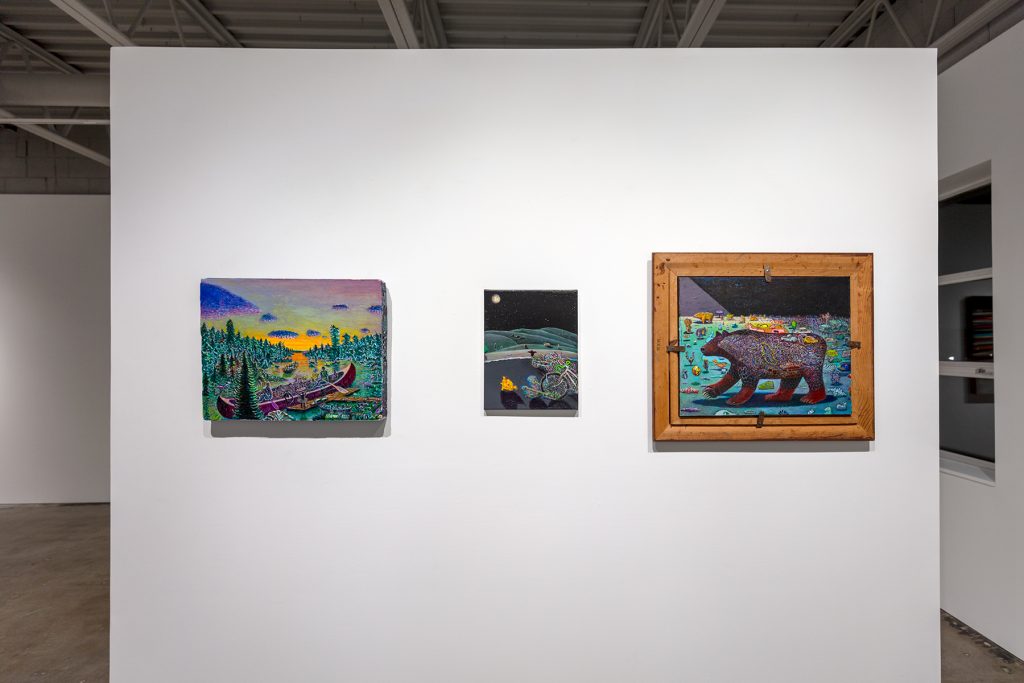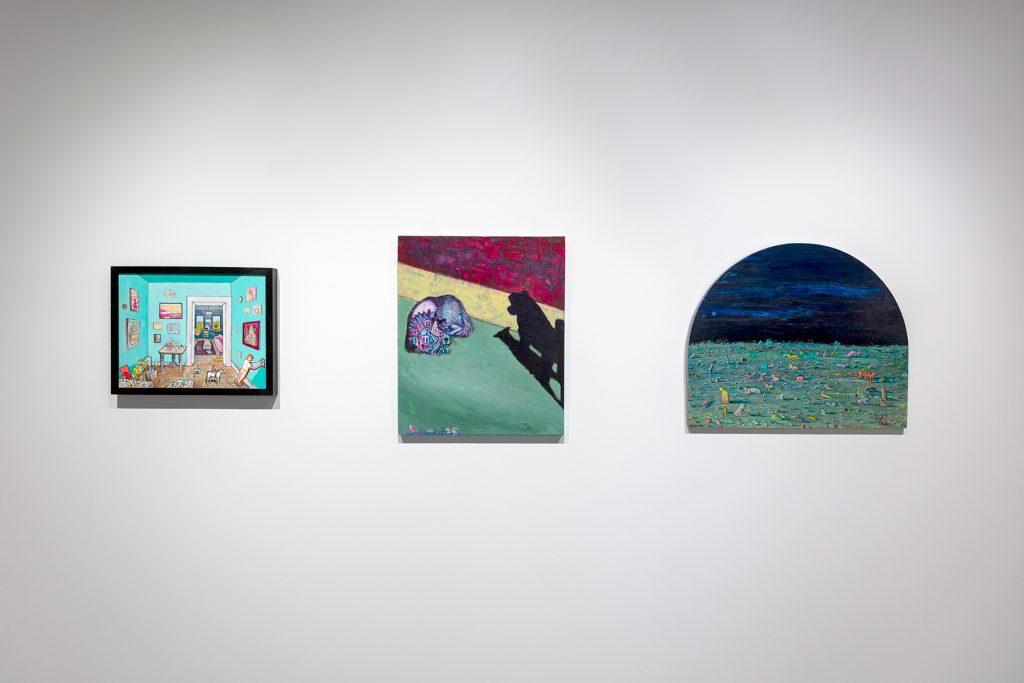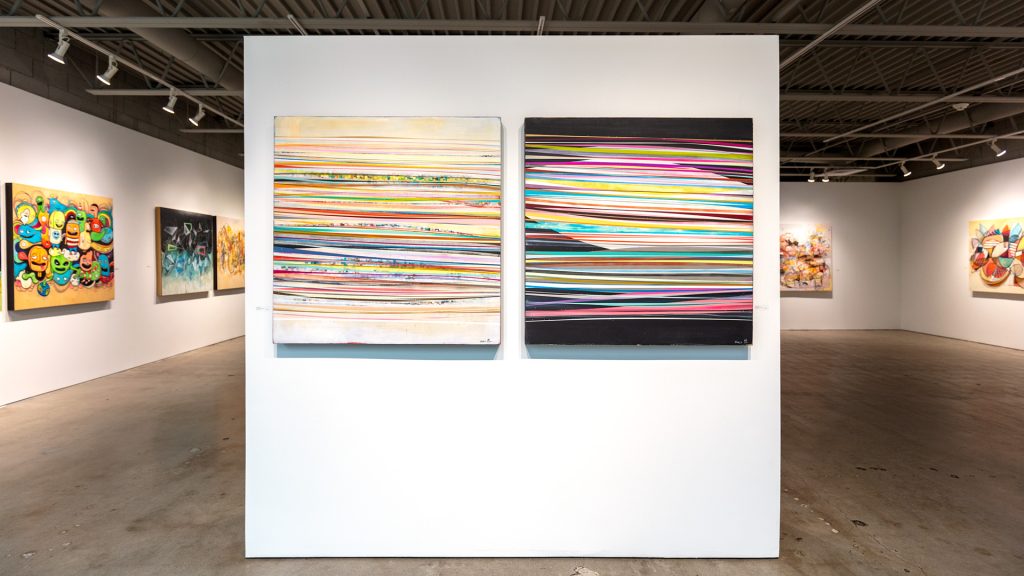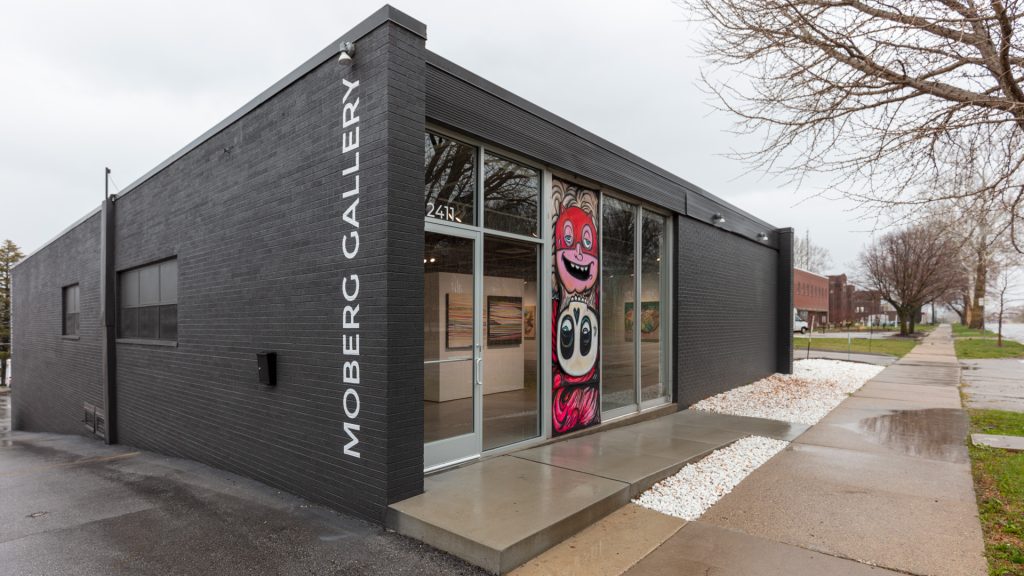TEXT BY MICHAELA MULLIN | VIEW IMAGES
“Unbound but Not Unsung”
Chris Vance has been intrigued during the pandemic years by the chaos and calm that coexist. Dual modes of operating seem to have emerged more noticeably now that the world is opening, and people are reacting differently to this resumed movement. Vance is fascinated by this, and has been studying the artists he admires, collaborating with friends, and sharing studio space with his son. Therefore, he decided that his 2022 exhibit needed to explore the nature of things that reside side by side, that both work together and fight against each other. Striking a balance by placing paintings in couples, Vance lets the works speak intimately to each other, their lines and color not so much an attraction of opposites but a learning to live together, with difference at the core.
Vance has been inspired by the work of Frank Stella recently, especially the printworks Stella created in the 1980s and ‘90s. Through the course of his career as painter, sculptor, and printmaker, Stella came to see the stories that emerged from the geometry he was employing:
“Abstraction didn’t have to be limited to a kind of rectilinear geometry or even a simple curve geometry, it could have a geometry that had a narrative impact …” (Frank Stella: Unbound, Literature and Printmaking. Princeton University Art Museum and Yale University Press, 2018, p. 29).
The yin and yang of contemporary painting and timeless abstraction; the light and dark of making things whole. One could go on and on–you and me, we, one, another. It all brings us to understand how together works and feels. When things become relational, they enhance —either in complementary or disjointed ways. Either way, one can’t be unseen, even if it is being over/shadowed.
As in the past, Vance’s work is musical and musically referential. This new exhibit is no different—it’s literally lyrical. Like Stella’s exploration of the literary canon and its classics to find inspiration in the movement of narrative—its arcs and leaps; so, Vance investigates the discography of his life (which happens to coincide with the years of Stella’s influential printworks) to find the beat of his and our concordant and discordant years. Vance found new ideas for what he has been doing all along. And in discovering these Stella works and words, Vance recognized his own process and was able to push it further: “You could tell a story with the shapes. It wouldn’t be a literal story, but the shapes and the interaction of the shapes and colors would give you a narrative sense.” (Ibid., p. 31).
“Bandwidth” and “Static Noise,” for instance, set the metaphoric tone for this new body of work, offering the frequencies on which sound is transmitted in smooth lines over pure black, and the sonic fuzz quality, as well as the dot pixilation visual, of the thing without transmission.
“Walking in the Sunshine” is lighter but somehow more monotone in its ray-like petals and sun-washed glow than its counterpart, “Darker Side of the Moon” (just like Katrina and the Waves put up against Pink Floyd, I suppose). In the latter, the contrast of the colors in curvature against the blackground of space actually gives the viewer a more vibrant side of the moon.
Vance’s two collaborative paintings, “Transcendence” and “Flow,” with artist, Pam Hibbs, speak to the very coupling the exhibit itself emerges. Not the story of side- by side-ness alone, but of the merging of two artist/authors into one story.
Vance and Hibbs have known each other for fifteen years as painter and collector, and friends. In 2017, when Hibbs took up painting again after putting art on hold to raise her family, they began critiquing together, as painter to painter, at Paintpushers, a Des Moines Area Artist Support Group. In 2021, Vance invited her to work with him on two large works, which would give Hibbs’ expressive brush strokes room to roam.
Hibbs began each piece in her own studio and then transferred it to Vance’s space; the relationship and process was playful. She is an “improvisational” painter who likes to listen to jazz while she creates. It seems the perfect aural/visual collab itself. Hibbs’ musical and nature-inspired marks combined with Vance’s geometry found a compatibility that, as the show tells us, struck a fine balance.
Dean Kube’s “The Levee,” acrylic on panel, catches a musician in the act of playing guitar, seated, with head turned down to focus on the strings and chords. Kansas City-based Kube may be paying homage to the KC institution of the same name, a bar and music venue that has been in business since 1965. The other evocations don’t hurt, namely the “Levee Song,” which we know now as the folk song, “I’ve Been Working on the Railroad.” It is a hard song to shake out the ear, but its impact is aligned with the subject matter. This is what Kube’s figurative and object paintings do—in having a singular subject, the ideas multiply in the viewer’s mind.
Multiplication is something Andrew Abbott excels at, and in true surreal form, has created new smaller works with dark and neon, to make scenes that shadow and glow. Take “Neon Cats in the Desert,” which, in and on Abbott’s signature half-moon panel, houses an entire landscape of felines lounging on aqua colored sand; where this barren land meets the horizon, the sky turns blue-black dark.
“Abstract Bicycle in the Moonlight” and “How It Started, How It’s Going” both take the shadow seriously. In the former night scene, the bright gold and red on the road casts its crumpled shadow, while the multiplicity of the abstract bike offers a shadow of gray as well what appears to be a confettied shadow of a figure. In the latter painting, a canine into which we can see its interior head rooms, curls on the ground with no shadow to cast; opposite, an opaque canine shadow stands upright over its own shadow. When the matter casts none and the casted casts more, the shadows no not where they come from but exist as their own entities.
Frank Stella may have been studying Moby Dick while printmaking in the 80s, and maybe he was going after his own white whale. But Vance is after something less antagonistic; he calls it Balance; one might call it hope … or “white light/white noise” (a slant reference to the Velvet Underground Vance would appreciate).
Exhibit Images
